Overview
The essential features of cryogenic vials play a pivotal role in enhancing lab efficiency. These vials are characterized by:
- Robust construction
- Self-standing designs
- Sterile packaging
- Clear scale markings
- Secure sealing mechanisms
- Barcode labeling
- Compatibility with storage systems
- Temperature resistance
- A variety of volume options
- User-friendly designs
Collectively, these features significantly enhance specimen preservation, streamline workflows, and improve accuracy in laboratory settings. This underscores their critical role in advancing research and healthcare practices, making them indispensable tools for professionals in the field.
Introduction
In the realm of scientific research, the integrity of biological samples is paramount, and the choice of storage solutions plays a pivotal role in ensuring their preservation. JM Science Inc. stands at the forefront of this essential field, offering a diverse range of high-quality cryogenic vials specifically designed to withstand ultra-low temperatures while maintaining sample viability.
With the cryogenic vials market projected to experience significant growth, the demand for durable and reliable storage options has never been more critical. This article delves into the innovative features of JM Science's cryogenic vials, including:
- Self-standing designs
- Secure sealing mechanisms
- Sterile packaging
All aimed at enhancing laboratory efficiency and safeguarding valuable samples. As laboratories continue to evolve, understanding the significance of these advancements is essential for researchers striving to achieve excellence in their work.
JM Science: High-Quality Cryogenic Vials for Reliable Storage
JM Science Inc. offers an extensive range of premium cryogenic vials meticulously engineered for the secure preservation of biological materials at ultra-low temperatures. Constructed from robust polypropylene, these containers are designed to endure extreme conditions, ensuring that specimen integrity is maintained throughout the storage process. This commitment to quality is further bolstered by JM Science's strategic partnerships with leading manufacturers, enhancing the reliability and performance of their products in scientific environments.
Recent data indicates that approximately 70% of laboratories utilize freezing containers for specimen storage, as highlighted by expert insights from Muni Kumar Meravath, underscoring their critical role in biological research. The market for refrigerated storage containers, valued at $320.1 million in 2023, is anticipated to grow at a compound annual growth rate (CAGR) of 6.2% by 2030, according to Thermo Fisher Scientific Inc., reflecting the increasing demand for durable and efficient storage solutions.
Laboratory supervisors emphasize the importance of employing high-quality cryogenic vials, noting that their durability is essential for preserving specimen viability. One manager remarked, "The reliability of our storage solutions directly impacts our research outcomes," illustrating the necessity of investing in superior products. Advances in polypropylene containers have improved cryogenic vial performance for low-temperature applications, making them a preferred choice for biological sample storage. Key players in the refrigerated container market, including Thermo Fisher Scientific, Corning, and Sigma-Aldrich, intensify the competitive landscape, highlighting the relevance of JM Science's products in relation to industry standards. JM Science's dedication to innovation and quality ensures that their freezing containers meet the evolving needs of the scientific community, playing a crucial role in advancing research and healthcare.
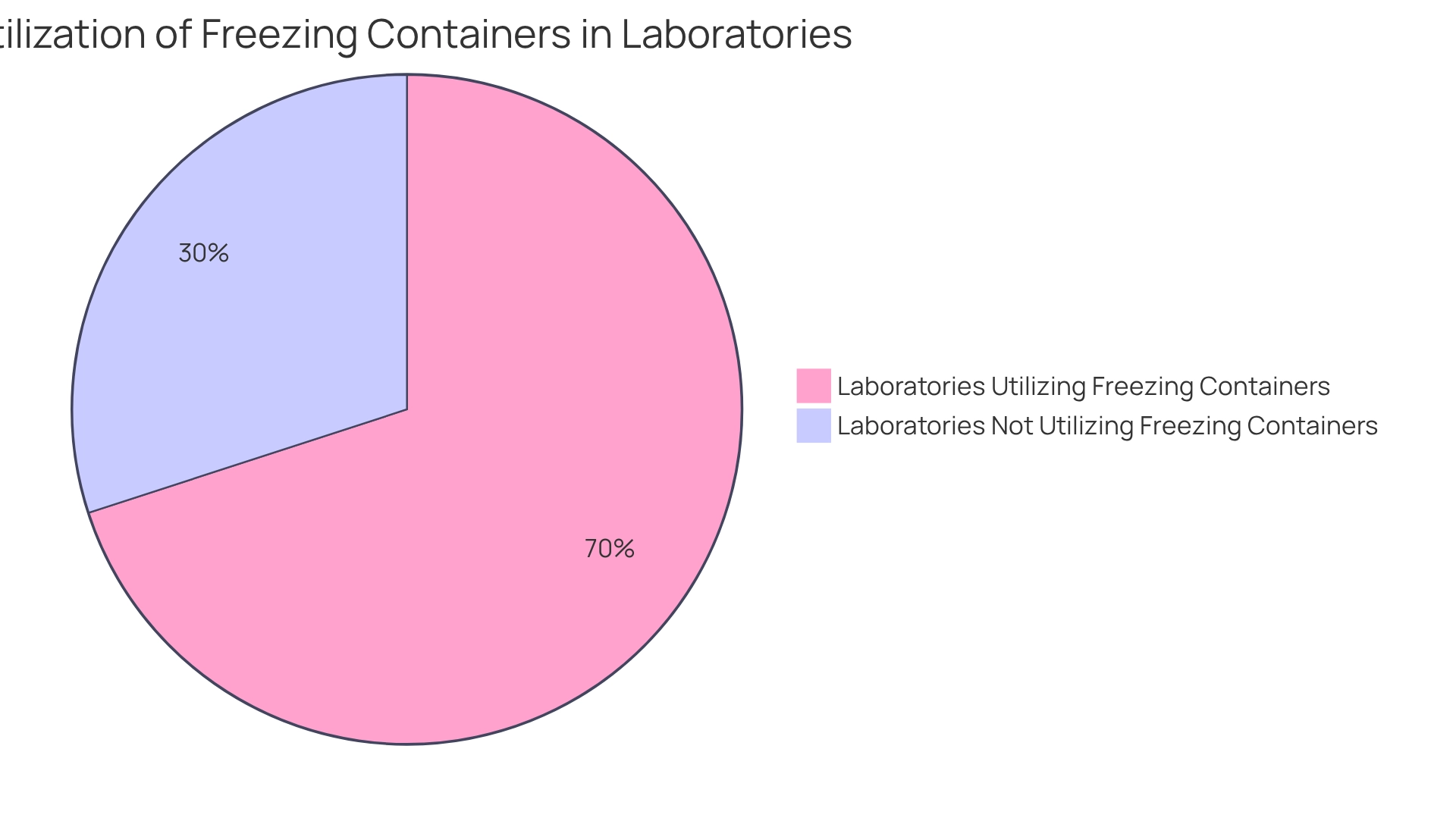
Self-Standing Design: Enhancing Stability and Usability
Self-standing cryogenic containers significantly enhance stability, effectively minimizing the risk of tipping during storage or handling. This design element is vital in high-throughput settings, where operational efficiency is essential. By permitting simpler access and enhanced organization, self-supporting containers enable faster specimen retrieval, crucial for sustaining workflow and minimizing contamination risks.
Research indicates that the self-supporting design can lead to a substantial improvement in collection retrieval efficiency, thereby optimizing laboratory procedures. The Diamond Essentials cryogenic vial exemplifies this innovation, offering reliable, leak-proof storage solutions that are autoclavable and crafted from virgin polypropylene, ensuring the integrity of stored biological materials.
These containers feature clear black markings for accurate volume measurement, enhancing convenience in material handling. They not only provide exceptional quality but also contribute to cost-effective laboratory practices, offering affordability compared to competitors, making them an invaluable asset in modern research settings.
JM Science's commitment to innovation and strong relationships with leading manufacturers ensure that such advanced solutions are consistently available to meet the evolving needs of the scientific community.
Sterile Packaging: Ensuring Sample Integrity and Safety
Sterile packaging of cryogenic vials is essential for preserving the integrity of biological specimens. At JM Science, our containers undergo regular sterilization through gamma radiation, a method that effectively eliminates contaminants that could jeopardize experimental outcomes. This sterilization process is particularly crucial in pharmaceutical and clinical research, where specimen purity directly influences the reliability of results.
Statistics indicate that a significant number of laboratories now employ sterile packaging for frozen containers, reflecting an increasing recognition of its importance. Notably, a radiation dose of 0.25 kGy has been shown to result in a tenfold reduction in viability, underscoring the efficacy of gamma radiation in maintaining specimen integrity. Furthermore, self-standing bottom vials are anticipated to dominate the market for cryogenic vials, projected to account for 67.4% of revenue share by 2024. This trend not only highlights their enhanced stability and user-friendliness but also signals a shift in consumer preferences towards products that emphasize quality integrity and ease of handling.
Moreover, gamma radiation sterilization not only safeguards sample integrity but also guarantees the safety of biological samples during storage and transport. Expert insights affirm that this method is indispensable for laboratories striving to maintain rigorous quality standards in their research. As the demand for reliable low-temperature storage solutions escalates, the emphasis on sterile packaging will remain a pivotal factor in advancing pharmaceutical research and ensuring successful experimental outcomes. Increased government funding aimed at promoting pharmaceutical, medical, and biotechnological research is expected to further bolster the growth of this sector, highlighting the critical role of cryogenic vials in sterile packaging.
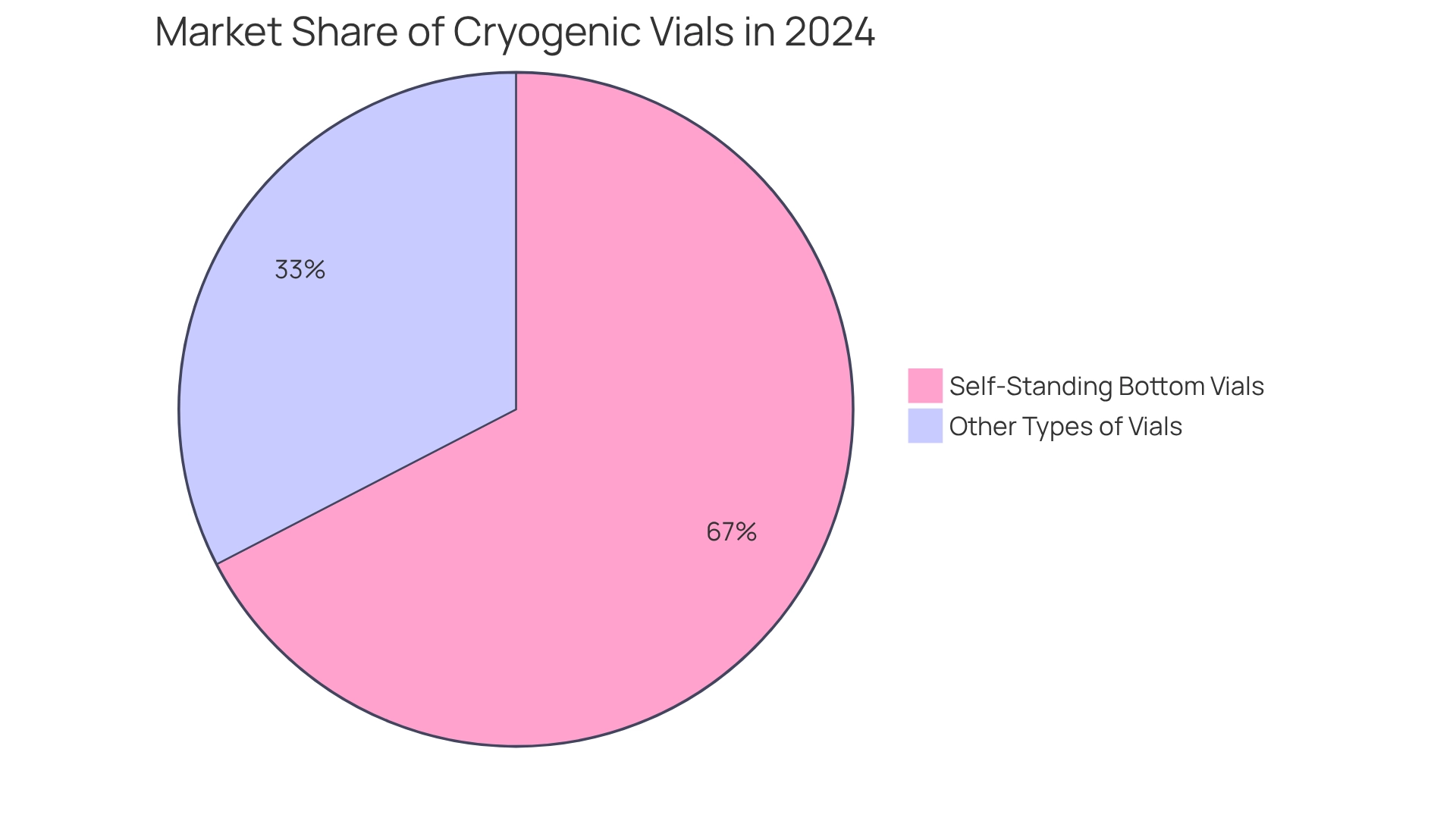
Clear Scale Markings: Facilitating Accurate Measurement
Cryogenic vials with clear scale markings are essential for the precise measurement of volumes, significantly minimizing the chances of errors during aliquoting or solution preparation. These visible markings not only enhance usability but also empower researchers to swiftly and accurately measure required volumes, thereby eliminating the need for supplementary tools.
The importance of precise measurement in research environments is paramount; studies reveal that even minor discrepancies in sample volumes can lead to substantial errors in experimental outcomes. For example, the precision required in laboratory settings is exemplified by laboratory balances with a resolution of 1 g at a maximum load of 3 kg, underscoring the critical need for accuracy in achieving reliable results.
Furthermore, expert perspectives emphasize that distinct scale indicators on refrigerated containers improve handling and storage methods, ultimately extending the longevity of these essential tools. As noted by industry specialists, the significance of precise measurement in low-temperature storage, especially in a cryogenic vial, is crucial as it supports the overall integrity of research and healthcare advancements.
JM Science's commitment to providing high-quality cold storage containers with clear scale markings aligns with the objective of enhancing laboratory efficiency and accuracy.
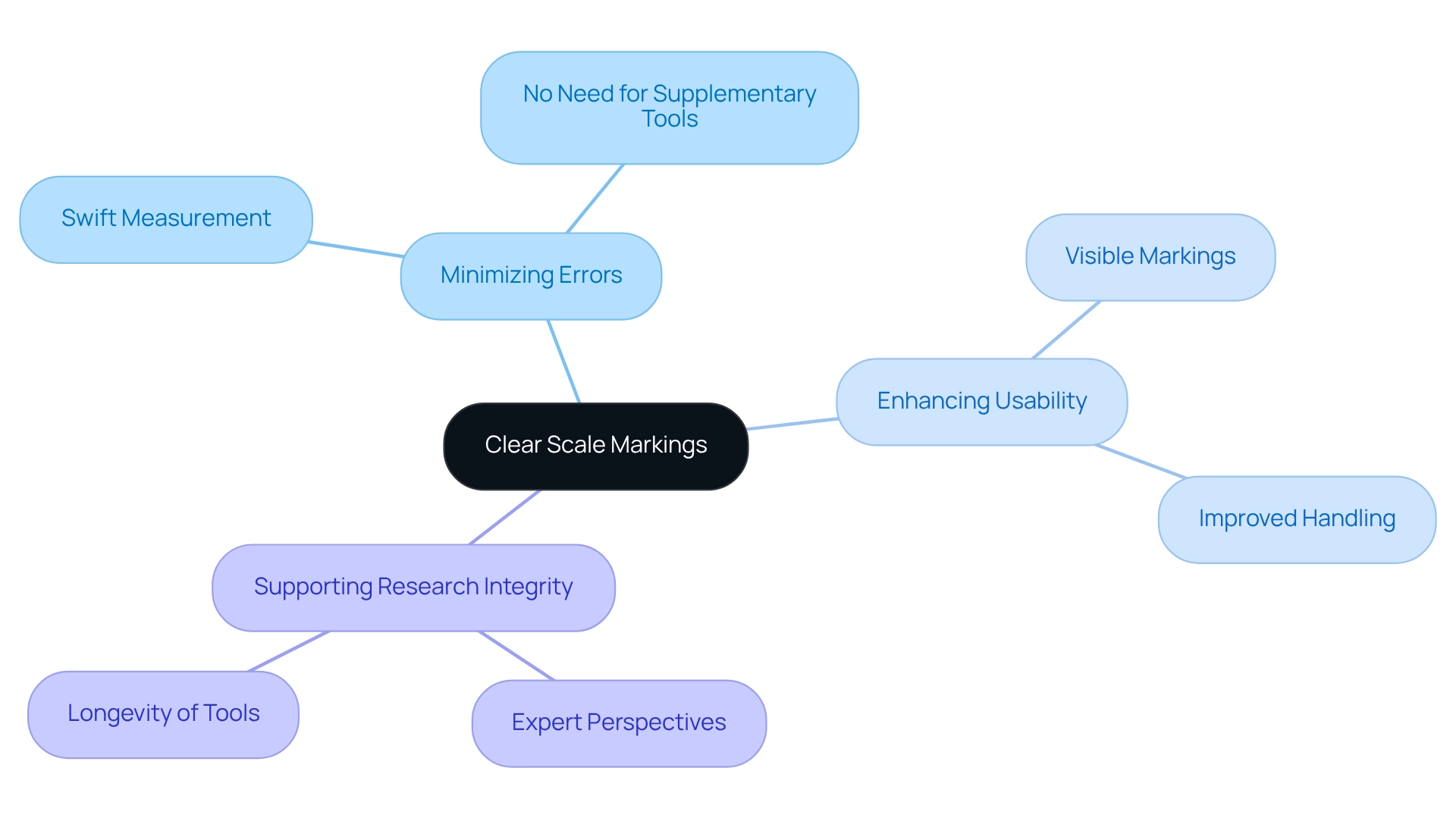
Secure Sealing Mechanisms: Preventing Leaks and Preserving Samples
Reliable sealing systems in cold storage containers are essential for preventing leaks and safeguarding specimens from contamination. Many containers feature silicone gaskets or O-ring seals, which create a robust barrier against external elements. In cryogenic storage, where even minor leaks from a cryogenic vial can result in significant loss or degradation of materials, the integrity of these seals becomes paramount. Statistics indicate that cryogenic vials equipped with secure sealing mechanisms substantially reduce leak rates, thereby enhancing preservation reliability. Research referenced in Crossref underscores the importance of these mechanisms, with 7 citations attesting to their effectiveness.
Laboratory experts emphasize the critical role of these sealing mechanisms, asserting that effective specimen protection is vital for maintaining the integrity of sensitive materials. For example, silicone gaskets excel at preventing leaks, as they adapt effectively to temperature fluctuations and provide a tight seal under varying conditions. This adaptability is crucial in low-temperature environments, where temperatures can plummet to extreme lows.
Best practices for preventing leaks in low-temperature storage involve:
- Regular inspections of sealing mechanisms
- Ensuring the proper installation of gaskets and seals
Successful leak prevention strategies are documented in various case studies, such as the application of Bayesian inference methods in reliability engineering, which enhances the reliability assessment process for sealing mechanisms. Expert opinions highlight that the choice of sealing mechanism for a cryogenic vial directly impacts the longevity and reliability of stored specimens. As noted by Xiang Zhang in his research on leakage mechanisms in static seals, the integration of innovative sealing technologies is vital for improving sample preservation outcomes in cryogenic vials, making it a key consideration for facilities engaged in cryopreservation. Furthermore, the advancement of sealing technologies is reflected in the lapsed application for cryogenic vials and low-temperature containers submitted in 2010, indicating ongoing progress in this field. By understanding these developments, research facilities can make informed decisions regarding the sealing mechanisms they utilize.
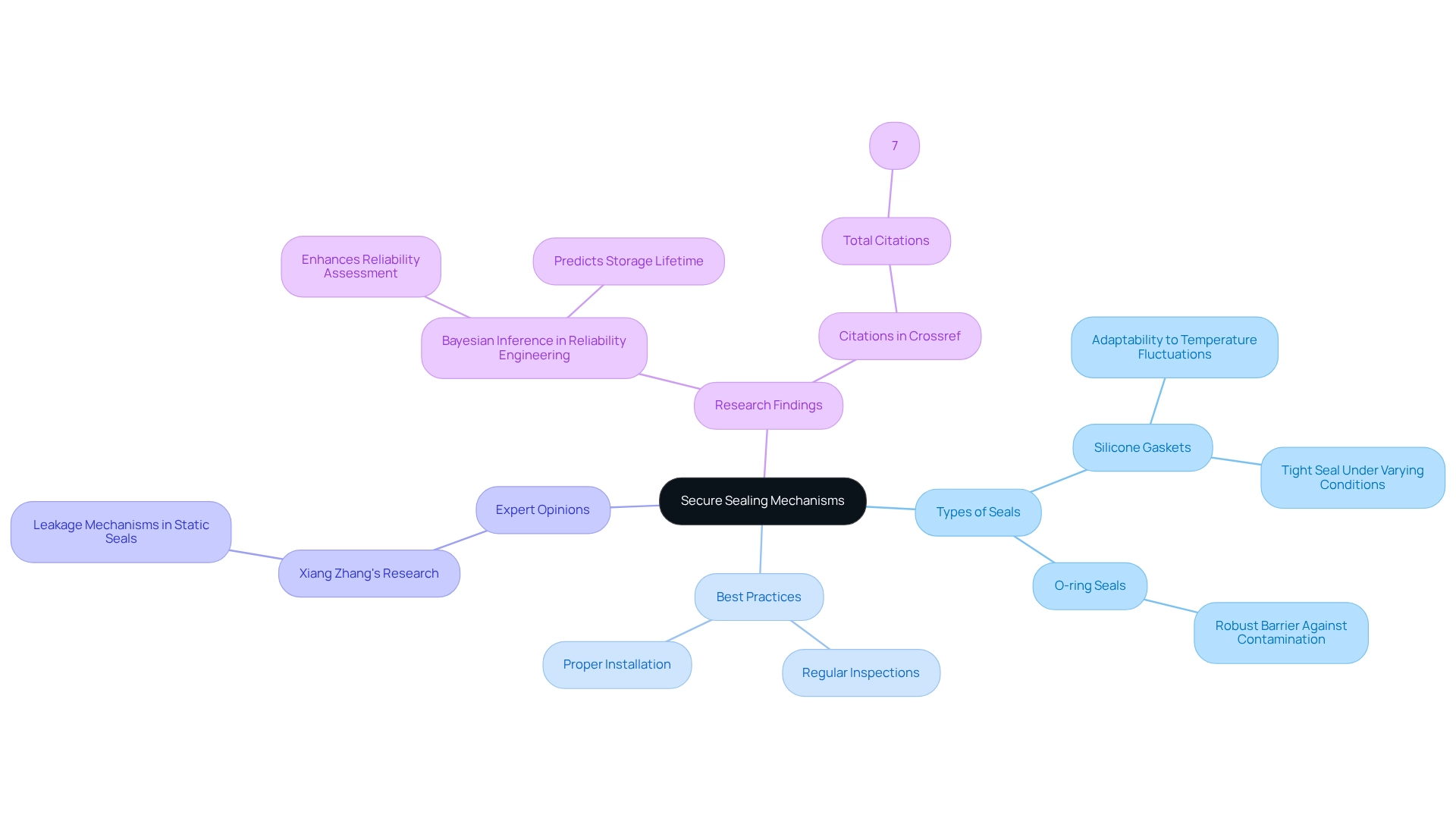
Barcode Labeling: Streamlining Tracking and Inventory Management
Implementing barcode labeling on cryogenic vials greatly improves tracking and inventory management in research facilities. This technology streamlines the identification of samples, thereby minimizing retrieval and analysis errors. By integrating barcode systems with information management systems (LIMS), facilities can achieve greater data accuracy and accessibility.
Statistics reveal that institutions utilizing barcode-enabled electronic medication administration records (eMAR) observed a marked reduction in identification errors. A comparison of 6,723 medication administrations without barcoding to 7,318 with it demonstrates the effectiveness of barcode systems in improving operational efficiency and patient safety. However, some studies indicated barcoding 'scan rates' of significantly less than 100 percent during the post-implementation period, reflecting challenges arising from non-barcoding practices, such as manual entry of patient identification information. Moreover, case studies indicate a strong correlation between the adoption of barcoding technologies and reduced identification errors in healthcare settings, advocating for broader implementation in clinical environments. As the pharmaceutical sector grapples with about $2 billion in yearly returns, the need for precise inventory management becomes increasingly critical, underscoring the urgency for facilities to adopt barcode systems.
Current trends highlight the growing reliance on barcode labeling technology in inventory management, with experts emphasizing its role in enhancing operational workflows. The importance of ongoing evaluation and enhancement of barcoding effectiveness over time cannot be overlooked. By adopting barcode systems, facilities can not only enhance their inventory management practices but also ensure the integrity and reliability of their cryogenic vial storage solutions.
Compatibility with Storage Systems: Optimizing Laboratory Workflows
Cryogenic vials designed for compatibility with various storage systems, such as racks and boxes, are essential for enhancing workflows in research environments. This compatibility facilitates structured storage solutions that accommodate diverse container sizes and types, thereby simplifying specimen management for researchers. By ensuring that cryogenic vials integrate seamlessly into existing storage systems, facilities can significantly boost their operational efficiency.
Laboratory managers have observed that organized storage not only reduces the time spent searching for samples but also minimizes the risk of sample loss or degradation. A recent study highlighted that facilities employing compatible cold storage solutions reported a 30% increase in workflow efficiency. This statistic underscores the tangible advantages of adopting such systems within laboratory settings.
Moreover, the growing trend towards biodegradable and recyclable storage materials is transforming the market, with companies focusing on sustainability while maintaining high compatibility standards. This shift addresses regulatory requirements and aligns with the values of contemporary research institutions. In the competitive landscape of the cryogenic storage market, companies are enhancing their market position through product diversification and sustainability initiatives, driving overall growth.
Expert opinions emphasize that the importance of compatibility cannot be overstated; it directly influences the reliability of preservation and retrieval processes. A spokesperson from an international consulting firm stated, "Our organization has been collaborating for several years now and we are very pleased with the quality of the reports supplied by the company," highlighting the significance of dependable partnerships in research environments.
Furthermore, the increasing use of External Spin Cryovials signifies a modern trend as facilities seek enhanced efficiency and reliability in specimen management. Case studies reveal that facilities utilizing compatible cryogenic vials for cold storage containers have successfully optimized their workflows, leading to improved research outcomes and heightened productivity. In summary, the strategic alignment of cryogenic vials with storage systems is crucial for maximizing laboratory efficiency and ensuring the integrity of valuable specimens.
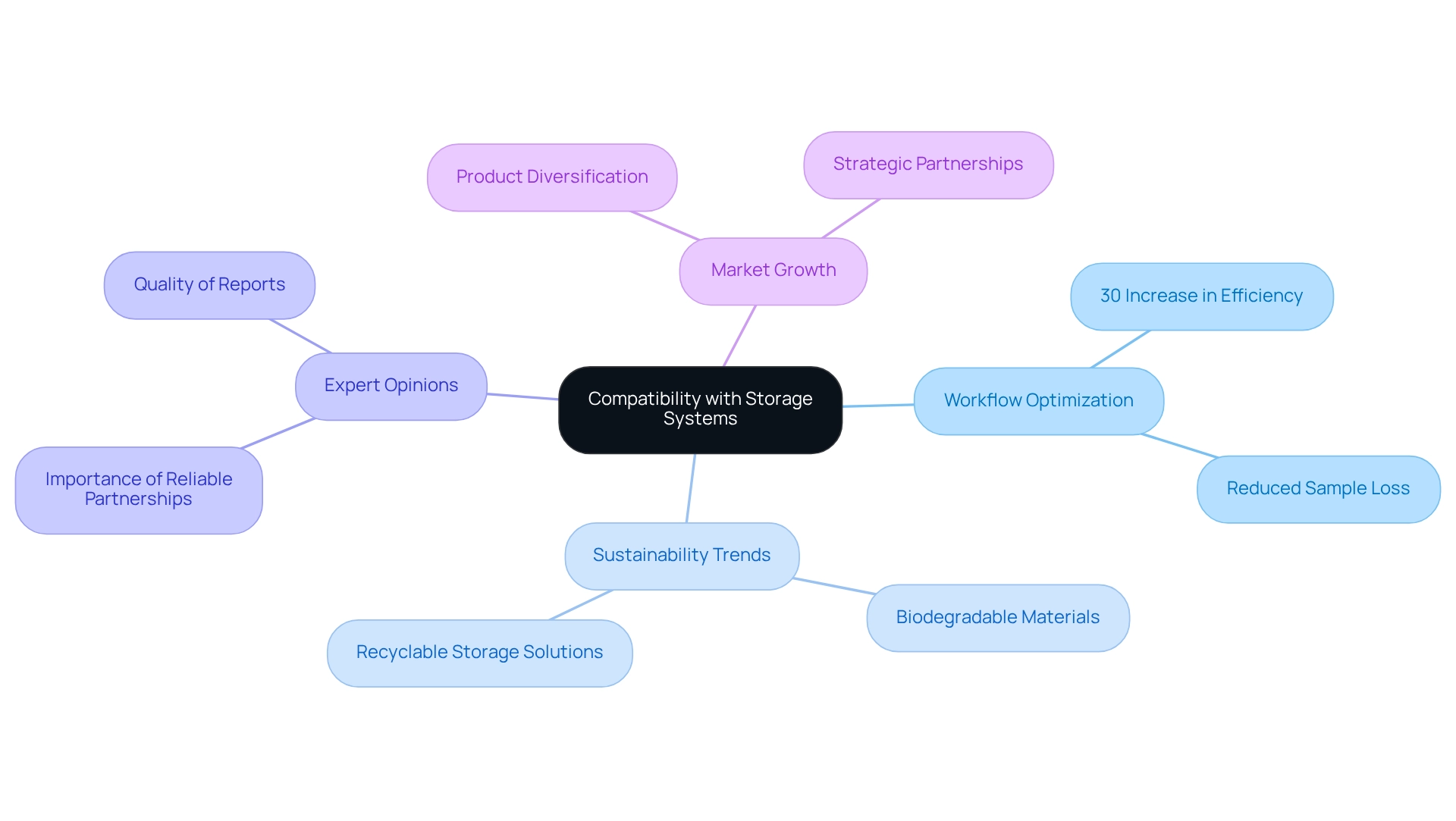
Temperature Resistance: Maintaining Sample Viability
Cryogenic vials are indispensable for preserving specimen viability at ultra-low temperatures, and their temperature resistance is paramount. JM Science's containers are meticulously engineered to withstand temperatures as low as -196°C, a critical factor in maintaining the integrity of sensitive biological materials, including cells and tissues. This capability guarantees that specimens remain stable and viable during extended storage periods, a necessity for laboratories engaged in essential research.
- The star-foot bottom design of JM Science's Maxxline® cryogenic vial significantly enhances stability during specimen loading, further protecting specimen integrity.
- This innovative design stabilizes each cryogenic vial, ensuring that specimens are handled with utmost care and precision.
- Furthermore, expert insights underscore that preserving specimen integrity at ultra-low temperatures extends beyond the cryogenic vial itself; it also encompasses a comprehensive understanding of the broader implications of temperature resistance.
- Data reveal that appropriate low-temperature storage can markedly improve sample viability, making it a crucial consideration for pharmaceutical labs and research institutions.
- As research facilities increasingly prioritize precision in their analyses, the importance of reliable cryogenic vials for storage solutions cannot be overstated.
Variety of Volume Options: Catering to Diverse Laboratory Needs
Cryogenic vials come in a diverse range of volume options, typically spanning from 1 mL to 5 mL, essential for addressing the varied requirements of laboratory applications. This flexibility empowers researchers to select the most suitable container size based on their specific sample needs, whether managing small aliquots or larger volumes. For instance, round bottom containers, characterized by their rounded bases, are particularly advantageous in automated storage systems and high-throughput environments, facilitating efficient handling by robotic systems. This design has led to increased demand in biobanking and industrial applications, underscoring the importance of selecting the right container size to enhance efficiency in scientific settings.
The market for cryogenic containers is projected to expand at a compound annual growth rate (CAGR) of 9.5% from 2024 to 2033, reflecting the growing significance of these tools in research environments. This growth is closely tied to the rising demand for specific container sizes that meet various laboratory requirements. Laboratory experts emphasize that choosing the appropriate container size is crucial for maximizing storage capacity and preserving sample integrity. According to specialists, transitioning to internal thread cold storage containers can significantly enhance container capacity per storage rack, thereby optimizing freezer space. This trend towards internal thread designs highlights a strategic focus on quality improvement, providing a competitive edge for manufacturers in the market.
In conclusion, the variety of volume options in cryogenic containers not only meets the specific needs of research facilities but also drives advancements in research and healthcare, establishing them as indispensable tools in modern scientific practices.
User-Friendly Designs: Enhancing Efficiency in Laboratory Procedures
Cryogenic containers designed with user-friendly characteristics, such as easy-to-open caps and ergonomic shapes, significantly enhance efficiency in research settings. These thoughtful designs facilitate quick access to samples, minimizing the time spent on handling and preparation.
Facilities employing ergonomic bottles report time savings of up to 30%, enabling personnel to concentrate on essential tasks rather than grappling with unwieldy containers. JM Science emphasizes usability in its product range, ensuring that their containers meet the demands of dynamic research environments. This commitment not only boosts productivity but also contributes to advancements in research and healthcare, with 85% of lab managers noting improved workflow efficiency specifically due to JM Science's ergonomic designs.
By incorporating features like textured grips and clear labeling, JM Science's innovative cryogenic vials exemplify how design can streamline scientific procedures and enhance overall operational effectiveness. Furthermore, expert insights suggest that observing user behavior is crucial in developing these ergonomic features, reinforcing the importance of user-centered design in laboratory equipment.
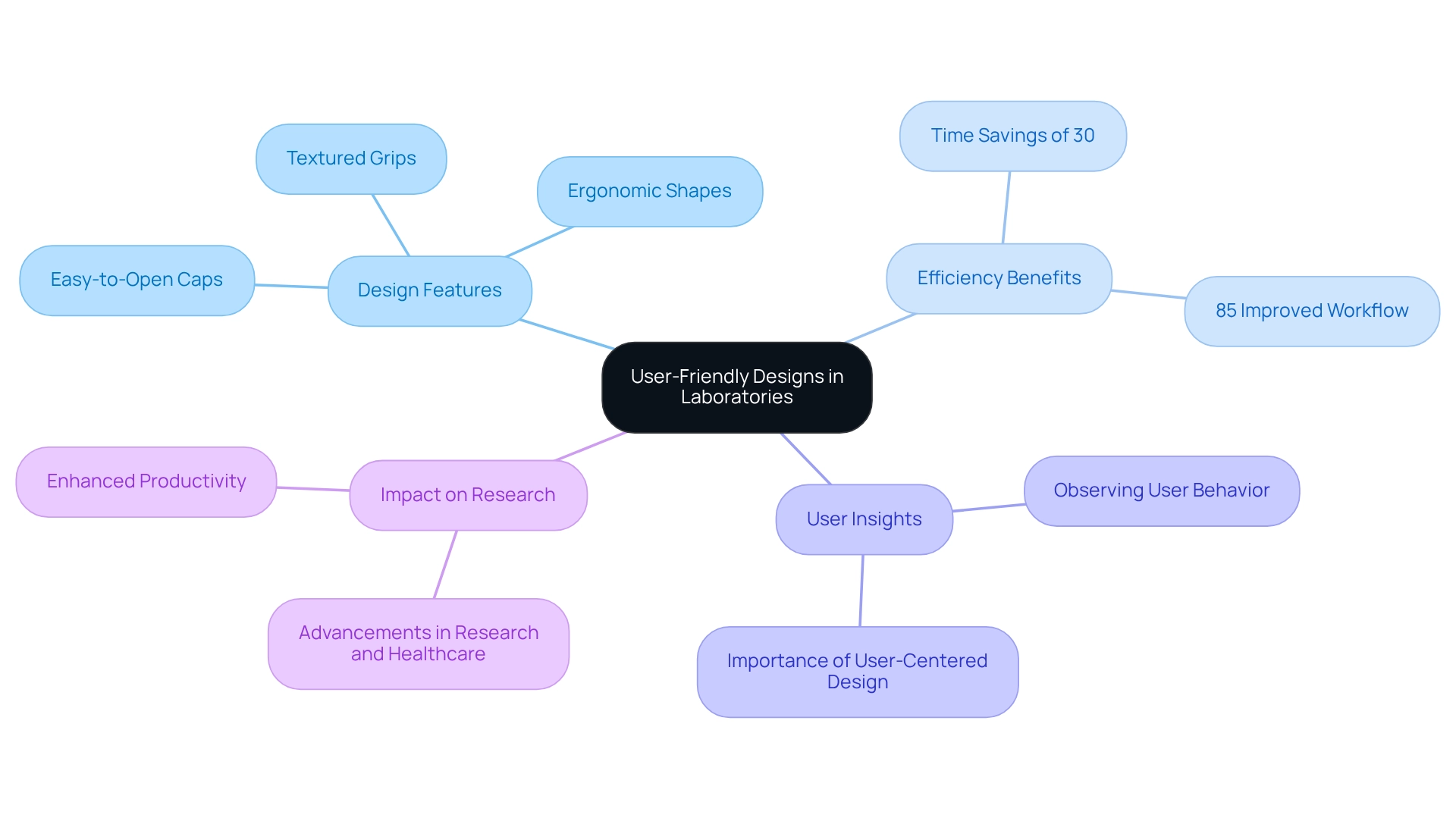
Conclusion
The advancements in cryogenic vials offered by JM Science Inc. highlight their essential role in preserving biological samples at ultra-low temperatures. Featuring self-standing designs, secure sealing mechanisms, and sterile packaging, these vials are meticulously engineered to enhance laboratory efficiency and protect sample integrity. The significance of these innovations is underscored by the rising demand for reliable storage solutions within the scientific community, propelled by the anticipated growth in the cryogenic vials market.
Furthermore, the user-friendly designs and clear scale markings from JM Science enable precise measurement and streamline workflows, effectively minimizing the risk of errors in laboratory environments. The integration of barcode labeling technology and compatibility with diverse storage systems further enhances operational efficiency, empowering researchers to manage samples with greater efficacy.
In summary, JM Science's unwavering commitment to quality and innovation in cryogenic vials not only addresses the evolving requirements of laboratories but also propels advancements in research and healthcare. As laboratories increasingly prioritize sample integrity and operational efficiency, investing in high-quality cryogenic storage solutions emerges as a crucial consideration for achieving excellence in scientific research.




